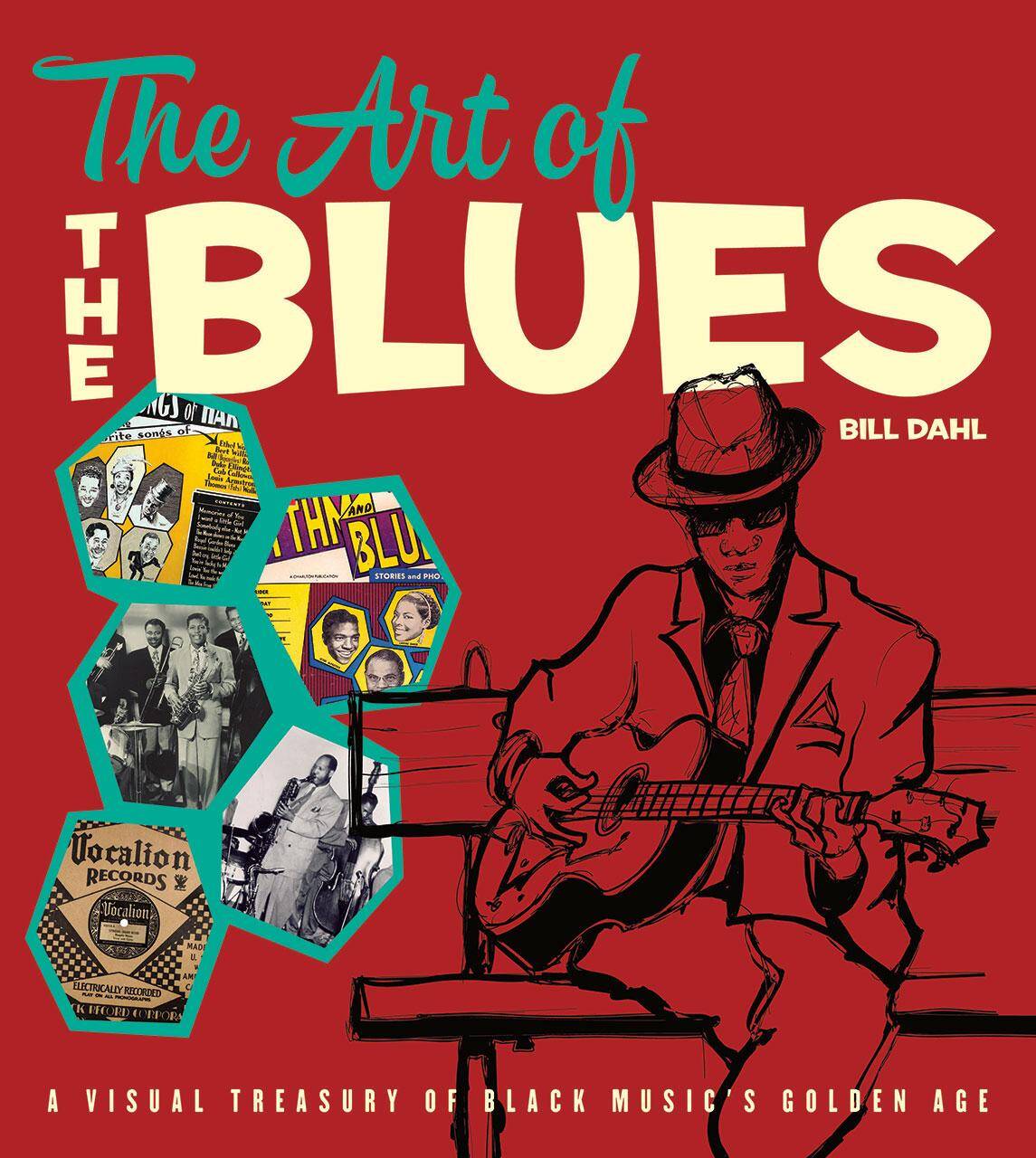 I was impressed immediately with this book’s physical presence. It’s hefty, and I momentarily thought it was sized to mimic a 1940s record album. Actually, it’s even bigger. You must spread this beautifully constructed book out on a table to enjoy.
I was impressed immediately with this book’s physical presence. It’s hefty, and I momentarily thought it was sized to mimic a 1940s record album. Actually, it’s even bigger. You must spread this beautifully constructed book out on a table to enjoy.
This is a showcase of the ephemera and created imagery that developed around the black music business between roughly 1915 and 1965. The focus on blues isn’t a substantial issue for the jazz fan. The bulk of the book, and surely the most fascinating portion, is dedicated to the prewar years. Before the war the record companies and promoters behind much of the material on display sorted by race, not genre. Gospel, jazz, and country blues were offered side by side both in catalogs and advertisements.
The race line wasn’t absolute, and a few white artists sneak into the book. Ladd’s Black Aces, a pseudonym for the white band known as the Original Memphis Five are featured in a Gennett catalog listing represented by a picture of an unidentified black outfit.
The focus on black communities, mostly urban, as hives of musical culture has rewards for the historian. Each chapter contains several two-page magazine style sidebars. One of these highlights the Hooks Brothers Photography Company in Memphis. These lucky fellows posed everyone from W.C. Handy with an orchestra in 1910 to a young B.B. King in 1949. The found time in between to take street shots of the Memphis Jug Band and capture one of the two known Robert Johnson photographs.
Another focuses on the story of Tilghman Press in San Francisco. Decades before creating some of the most iconic concert posters of the psychedelic era, this family business was printing concert posters for the jazz greats as well as an actual Black Who’s Who of the Golden State: The Colored Directory of the Leading Cities of Northern California.
I found the capsule histories provided for the dime store and small labels revelatory. Even if they only cemented years, geographic reach, or top stars, they helped me better understand the milieu from which these records sprung.
This is a book about visual artifacts but the research behind the captioning speaks to a labor of love. Bill Dahl has written about music for many years and Chris James, credited as Art Consultant, provided a substantial portion of material from his own collection.
The imagery is lively and celebratory, each page brings new joys. As someone who came to this music by way of 78 RPM records, I was delighted with the sections on label and paper sleeve art. The newspaper ads feel like lost treasure. The sheet music and the movie posters are gorgeous. The magazines, promo publications, and LP covers, focused on the blues in the postwar years, are equally colorful. Some of the photographs scattered throughout I would love to print for my own wall.
There are additional odds and ends ranging from concert tickets from an age when such things were beautifully made, to a Christmas card from Fletcher Henderson. It would take a lifetime to assemble this material on your own.
Pixilated images are to be had online but a book like this gives you a bit of the joy of actual possession, and without the worry of the care (or the expense) of originals. The ability to hold it in your hand brings a sense of wonder. Must you own it? Of course not. But left indiscreetly on your coffee table it is sure to be a crowd-pleaser and alert your guests to one of your private passions—much like your copy of The Syncopated Times.
The Art of the Blues: A Treasury of Black Music’s Golden Age
by Bill Dahl and Art Consultant Chris James
University of Chicago, Cloth $35.00 ISBN: 9780226396699
(press.uchicago.edu)
Joe Bebco is the Associate Editor of The Syncopated Times and Webmaster of SyncopatedTimes.com





















